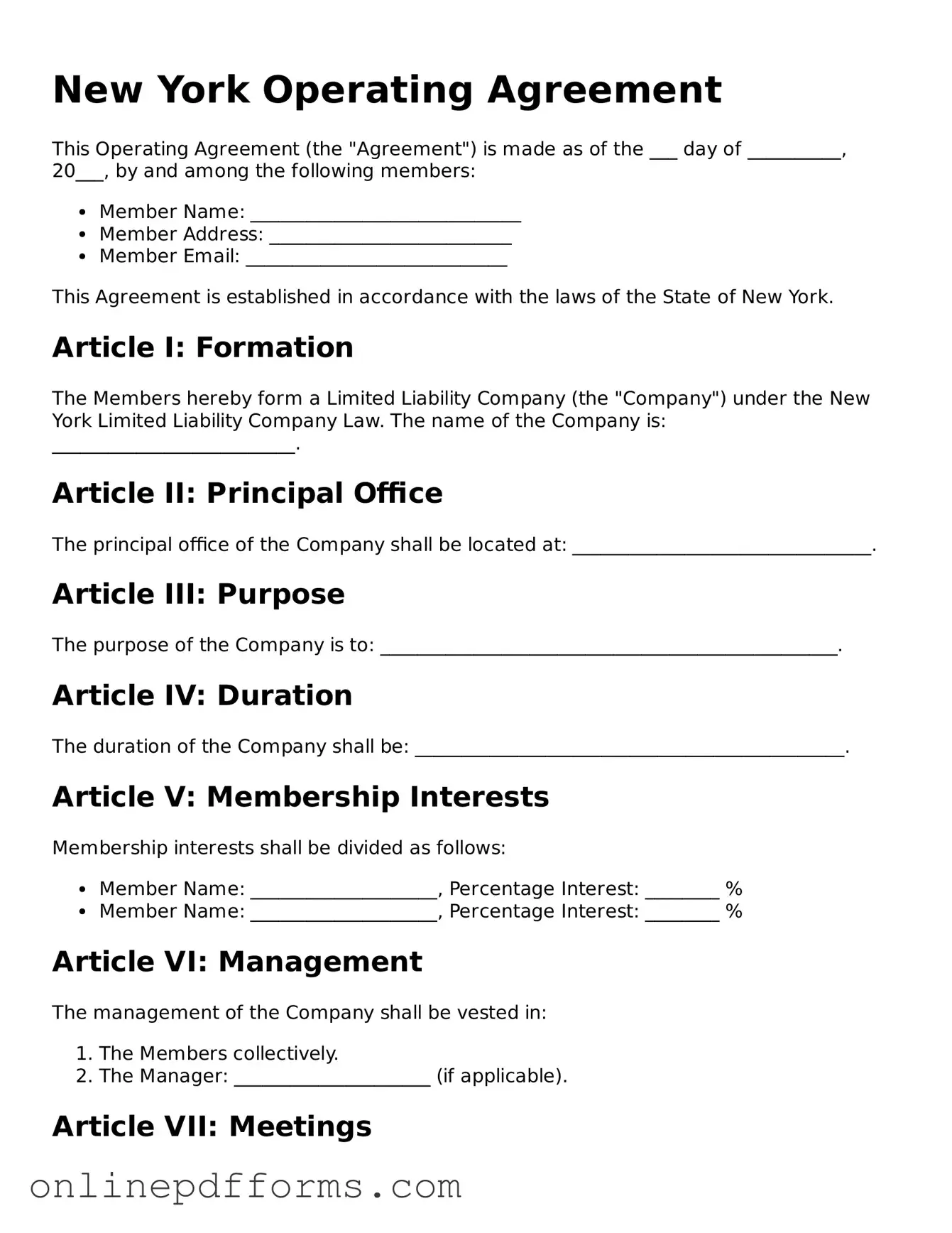The New York Operating Agreement is similar to a Partnership Agreement, which outlines the terms and conditions under which partners operate a business. Like the Operating Agreement, a Partnership Agreement specifies the roles and responsibilities of each partner, how profits and losses are shared, and procedures for resolving disputes. Both documents serve to clarify the expectations and obligations of the parties involved, ensuring that everyone is on the same page regarding the management and operation of the business entity.
Another document that shares similarities with the New York Operating Agreement is the Bylaws of a corporation. Bylaws govern the internal management of a corporation and detail the structure of the organization, including the roles of officers and directors, meeting protocols, and voting procedures. Like an Operating Agreement, Bylaws provide a framework for decision-making and help maintain order within the organization. Both documents are essential for establishing clear guidelines and ensuring that all members understand their rights and responsibilities.
The Shareholders Agreement also bears resemblance to the New York Operating Agreement. This document is used by corporations to outline the rights and obligations of shareholders. Similar to an Operating Agreement, it addresses issues such as the transfer of shares, voting rights, and how decisions are made within the company. Both agreements aim to protect the interests of their respective parties and facilitate smooth operations by reducing the potential for conflicts among stakeholders.
Finally, the Limited Liability Company (LLC) Membership Agreement is akin to the New York Operating Agreement. This document governs the relationship between LLC members, detailing their rights, responsibilities, and the management structure of the LLC. Like the Operating Agreement, it provides clarity on profit distribution, decision-making processes, and the procedures for adding or removing members. Both documents are vital for ensuring that the members of the LLC understand their roles and the operational framework of the business.
